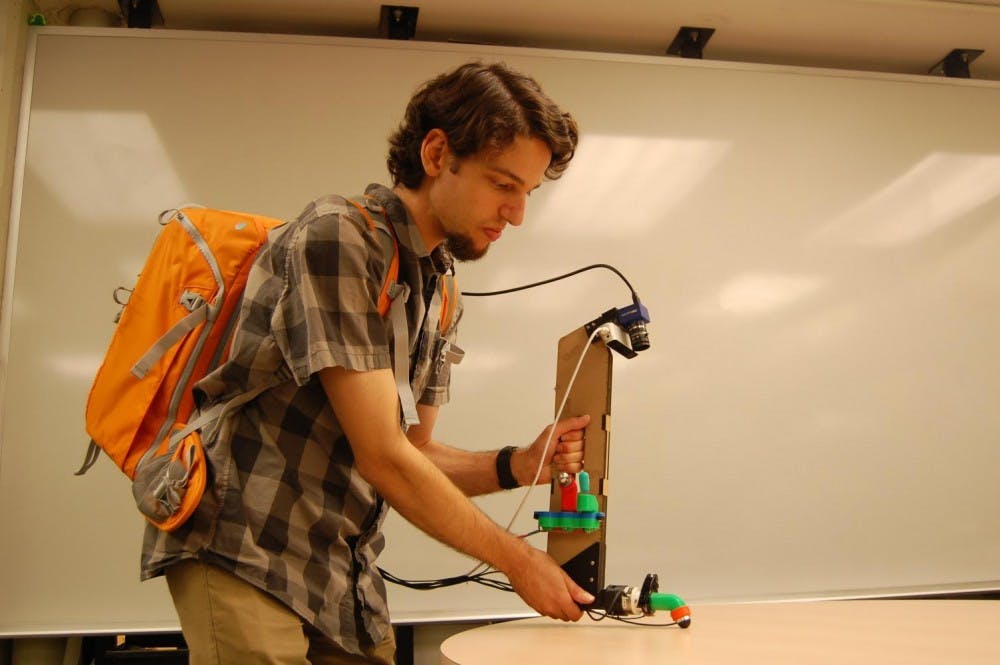
Courtesy of Alex Burka // The 5th-year Ph.D student is pictured here with his orange "Proton Pack."
While technology surrounding artificial intelligence has advanced rapidly in recent years, experts generally acknowledge that modern AI still lacks an important kind of ”common sense" that limits their functionality.
Researchers at Penn are working to change that.
Alex Burka, a fifth-year Ph.D. student in electrical and systems engineering, is working to create a database of more than a thousand different surfaces that will allow robots to “feel with their eyes.”
“We want to give robots the ability to not just take images and data from their surroundings but understand what they’re looking at,” Burka said. “Our goal is that the robots wouldn’t need to touch the object if they can get information about the object just by looking at it.”
To gather data, Burka has been going around campus wearing a “Proton Pack” — a large orange backpack equipped with a long, narrow instrument that has three different types of sensors attached. Burka taps and drags the sensors along each surface while a camera records his movements.
One perk of the “Proton Pack,” which Burka built with the help of several other students, is that it’s portable and can be used to test surfaces, such as floors, furniture, etc., all across campus.
Eventually, Burka hopes that with the database he creates, robots will be able to discern properties of an object — whether it is soft or slippery, for instance — just by looking at it, and then make an informed decision on how to best handle it.
Burka’s project is a continuation of work previously done in the lab of Penn professor Katherine Kuchenbecker, who specializes in mechanical engineering.
Burka joined Kuchenbecker’s lab in 2015, when Kuchenbecker and Trevor Darrell, co-director of the University of California, Berkeley Artificial Intelligence Research Lab, received funding for the project from the National Science Foundation as part of the National Robotics Initiative. Burka continues to collaborate with researchers from Darrell’s lab at UC Berkeley.
“[The project] will allow robots to help people in the everyday environment,” Kuchenbecker said. “It will enable them to interact physically with the world.”
This database could potentially allow robots to help in a search and rescue mission, she added. With the database, they would be able to predict what types of surfaces they have to go over, such as rocks or ice, and successfully adjust their settings to walk across them.
The Daily Pennsylvanian is an independent, student-run newspaper. Please consider making a donation to support the coverage that shapes the University. Your generosity ensures a future of strong journalism at Penn.
Donate




